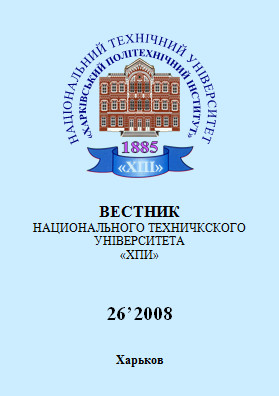Информационная технология распознавания проблемных ситуаций в процессе функционирования промышленного предприятия
DOI:
https://doi.org/10.20998/%25xAbstract
В статье рассматриваются вопросы создания информационной технологии, которая дает возможность в интерактивном режиме «пользователь - ПЭВМ» распознавать проблемные ситуации, которые возникают в процессе функционирования промышленного предприятия.References
Фонта Н. Г., Лисицкий В. Л. Ранее обнаружение проблемных ситуаций в процессе хозяйственной деятельности предприятия, функционирующего в конкурентной среде // Східно-європейськи журнал передових технологій. - 2007. - №1. – С12-22.
Андрейчиков А. В., Андрейчикова О. Н. Анализ, синтез, планирование решений в экономике. – М.: Финансы и статистика, 2000. – 368 с.
Саати Т. Принятие решений: метод анализа иерархий: Пер с англ. – М.: Радиосвязь, 1993. – 320 с.
Саати Т., Кернс К. Аналитическое планирование. Организация систем: Пер. с англ. – М.: Радио и связь, 1991. – 224 с.
Сваткин М. З., Мацута В. Д., Рахдлин К. М. Группы качества на машиностроительных мероприятиях. – Л.: Машиностроение, 1988. – 141 с.
Downloads
How to Cite
Issue
Section
License
Copyright (c) 2017 Bulletin of NTU “Kharkiv Polytechnic Institute”. Series: System Analysis, Control and Information TechnologiesAuthors who publish with this journal agree to the following terms:
- Authors retain copyright and grant the journal right of first publication with the work simultaneously licensed under a Creative Commons Attribution License that allows others to share the work with an acknowledgement of the work's authorship and initial publication in this journal.
- Authors are able to enter into separate, additional contractual arrangements for the non-exclusive distribution of the journal's published version of the work (e.g., post it to an institutional repository or publish it in a book), with an acknowledgement of its initial publication in this journal.
- Authors are permitted and encouraged to post their work online (e.g., in institutional repositories or on their website) prior to and during the submission process, as it can lead to productive exchanges, as well as earlier and greater citation of published work (See The Effect of Open Access).


